Review: PointUI Home 2 Pro
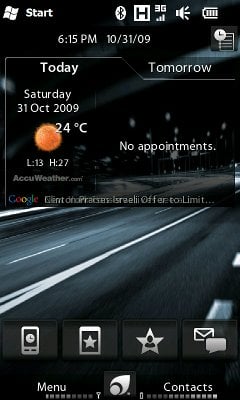
It seems like any weakness in the Windows Mobile platform is an area in which third party developers spend a lot of time trying to create software that will fill in the gaps. This makes sense for business reasons, who wants to buy an application that the platform already does a good job of handling?
One of the most maligned facets of Windows Mobile in the past years is the interface itself. Consequently, multiple developers have been applying their expertise to building a product that consumers will flock to in order to make their powerful devices more user friendly and customizable. HTC’s TouchFLO and SPB’s Mobile Shell are the two major players in this market, with other options available from the likes of Vito Technologies (Winterface), SHBT (MyHome), and PointUI.
The subject of this review, PointUI Home 2, began its development as a free application. As is fairly common a Pro version is now available for $19.95, offering an increased feature set for a premium price.
For the full review of PointUI Home 2 and all that it offers, hit the jump.
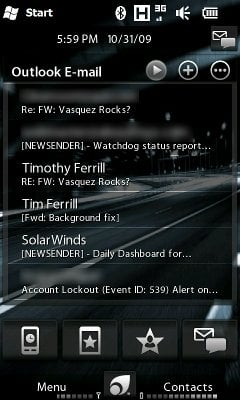
Usability
PointUI does add a lot of usability to Windows Mobile by putting as much information as possible directly in the home screen. Call history, SMS and E-mail, Appointments, and Tasks are all accessible from within the interface.
On the Usability category, I would say that PointUI is a little bit behind the two major players (Touchflo and Mobile Shell) in this segment. But that can be changed depending on how you customize the interface, which leads into the next category.
All the latest news, reviews, and guides for Windows and Xbox diehards.
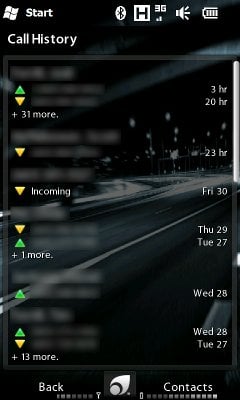
Customizability
One of the things that is a little bit strange to me is the level of support for customization within TouchFLO and SPB Mobile Shell. With TouchFLO, there are all kinds of tools available on XDA and other sites to tweak the look and feel of your device; but the “official” support for this kind of thing is severely lacking. With Mobile Shell, there are numerous widgets that can be placed on different screens and arranged however you like, but there isn’t much ability to customize or create your own widgets.
PointUI allows for you to utilize your own graphics and to create custom themes. While this is possible to a point with some of the other tools I’ve mentioned, none of the other options provide the documentation and community support that PointUI does. Additionally, PointUI supports an entire scripting language to create custom “Applets”, giving you virtually unlimited opportunities for customization either through building your own Applets or making use of the active developer community to find the perfect Applet.
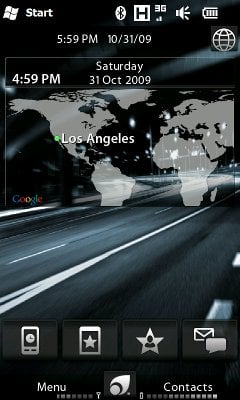
Pro Features
Most of the functionality found in PointUI Home 2 is available in both the Pro and Free versions. The major benefits from purchasing the Pro version are listed here.
- Contact Card
- Threaded Personal History
- Messaging Screen with Filtering Options
- The ability to use Folders with your Favorites
- The ability to run 9 Applets (Free version allows for a maximum of 6)
- Customization options like Haptic Feedback and G-sensor support (for HTC Devices only)
- Advanced Features are available to the Scripting Engine
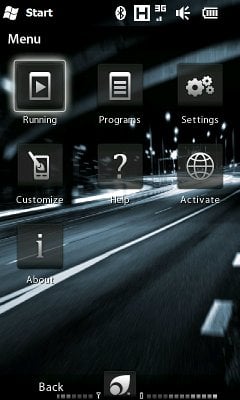
Conclusion
It’s always interesting to survey the landscape made up of various mobile platforms. One device in particular is really pushing the way that it can be personalized to your needs (Hint: it isn’t an Apple product). Honestly though, I see this as one of the major benefits that Windows Mobile still has over other platforms. PointUI is one of those tools that really enable us to make our phones, which are very much an extension of our lives, into something that is unlike anything else on the planet. If it is absolutely imperative that you can customize your UI in any and every way possible, PointUI Home 2 Pro is the way to go.
PointUI Home 2 Pro can be purchased directly from the developer. Visit PointUI for the free or Pro versions.

Phil is the father of two beautiful girls and is the Dad behind Modern Dad. Before that he spent seven years at the helm of Android Central. Before that he spent a decade in a newsroom of a two-time Pulitzer Prize-finalist newspaper. Before that — well, we don't talk much about those days. Subscribe to the Modern Dad newsletter!
